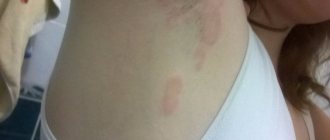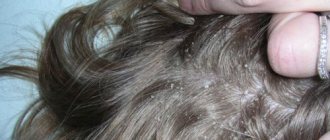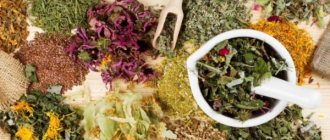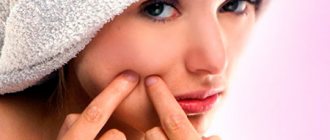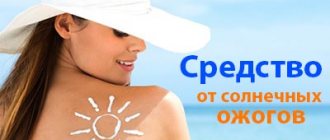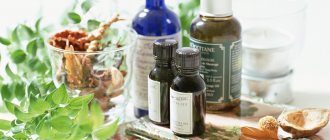Almost everyone knows the disease urticaria, which is characterized by the appearance of certain burns on the skin surface, reminiscent of wounds after contact with nettles. The blisters are small, pink in color, lighten when pressed and are often accompanied by unbearable itching. How to relieve itching due to hives? And how to cure this disease? These questions can only be answered if you are absolutely sure that it is urticaria. First you need to understand the main symptoms.
Coconut oil relieves itching from hives and soothes the skin
Causes and manifestations
Signs of urticaria can appear equally in adults and children. The causes of an allergic reaction can be different:
- Influence of the external environment: cold, water, ultraviolet rays, radiation.
- Food. The most common allergens are chocolate, cocoa, honey, nuts, citrus fruits, strawberries.
- Medicines, most often antibiotics - penicillin, Rifampicin, Tetracycline and others.
- Insect bites - bees, wasps, hornets and even mosquitoes.
- Animal fur.
- Plant pollen.
- Exposure to harsh chemicals such as cleaning agents and detergents.
It is very important to notice the first signs in time and immediately relieve an allergic attack. The symptoms of the disease are as follows:
- the skin turns red;
- swelling or even large blisters appear;
- touching the affected areas causes a painful sensation;
- itching, which intensifies in the evening and at night;
- sometimes - fever, chills, nausea.
Main manifestations of urticaria
Urticaria appears as red spots immediately after an allergic element enters the human body. The spots most often disappear after a few hours; there are rarely cases when they remain for a long time. Weakness, dizziness, fever, and headache may occur. In its chronic form, urticaria manifests itself only as a response to a specific allergen (food, substance, etc.). Red dots appear on the neck and chest area and do not go away for a long period of time.
Angioedema affects the skin quite deeply, unlike ordinary urticaria. As a result of the disease, large swelling occurs in places where there is loose tissue in places such as the lips, eyelids, larynx, mouth, and a burning sensation and pain occurs in the affected areas.
In mild form, Quincke's edema may disappear after a few hours. Patients with severe and moderate forms are subject to urgent hospitalization. Swelling in the mouth, neck and larynx is considered dangerous, as it can subsequently cause suffocation.
Causes of itching with urticaria:
- a bite of an insect,
- dysfunction of internal organs,
- metabolic disease,
- infectious diseases,
- indigestion of certain foods,
- physical contact with a specific substance.
The occurrence of hives can also be caused by a sudden change in temperature, or a change in cold and hot water. During the warm season, the skin may suffer from solar urticaria. An important place among the varieties of this disease is allocated to nervous urticaria, which can appear as a result of severe emotional shock or a stressful situation. This form of the disease is also characterized by severe itching, in which the skin surface is severely injured.
There is also a rare form of the disease, non-pruritic urticaria, which appears as a white border around the blisters. The disease is called adrenergic urticaria.
Hives can be caused by various reasons
Urgent Care
To provide first aid for urticaria at home, you can use the following recommendations:
- apply ice packs or a paste of water and baking soda to the rash and blisters to narrow blood vessels and reduce swelling;
- take Tavegil, Cetrin or Diazolin - antihistamines;
- apply zinc ointment, Fenistil-gel or Psilo-balm - antiallergic agents - to the affected skin;
- use soothing tinctures of motherwort or valerian;
- Sometimes an enema is required for hives.
An important condition for getting rid of hives is to exclude from the diet foods that can trigger allergies - seafood, citrus fruits, milk, nuts and the like. In addition, it is necessary to observe the drinking regime: adults drink at least 2 liters, and children - at least 1 liter of still mineral water per day. It’s good if there is an antihistamine in the house. After taking it, the symptoms of the disease usually gradually disappear.
Injectable drugs
If a severe allergic reaction, itching, burning, or large swelling of soft tissues is observed, urgent hospitalization and the use of injectable drugs are necessary. The most famous ones include the following:
- Diprosan;
- Prednisolone;
- Suprastin;
- Calcium gluconate;
- Tavegil;
- Diphenhydramine.
Only a doctor can prescribe these medications.
If there is a sharp deterioration in the condition, you should immediately consult a doctor.
Use of medications
Even competently provided emergency care is not always able to relieve an allergic rash and itching. In this case, you will need the intervention of a doctor who will prescribe complex treatment with medications:
- Pills. Adults are usually recommended to take antihistamines: Tavegil, Diazolin, Suprastin, Fenkarol. Tablets such as Astemisan, Telfast, Cetrin are also effective in such cases. Children are prescribed medications with milder effects ─ Xyzal, Fexadin.
- Ointments. Most often, doctors advise fighting itching and blisters with hormonal ointments. Apply the recommended preparation to reddened areas of the skin. Prednisolone ointment helps well, as do Flucinar, Deperzolon, Advant. It is better to lubricate children's skin with non-hormonal ointments. Signs of allergy can be relieved with zinc ointment, Fenistil-gel or Nezulin cream.
In addition to these medications, laxatives, activated charcoal, and antipruritic medications may be recommended.
Urgent action for urticaria
To quickly eliminate the symptom of rash, itching, redness and swelling of the skin due to urticaria, you need to follow these recommendations:
- remove the allergen;
- use a laxative, for example, special tea, decoction or magnesia;
- do a cleansing enema;
- take activated carbon in accordance with the age dosage;
- use anti-allergenic drugs (they should be chosen according to the doctor’s recommendations);
- affected areas of the skin should be wiped with an alcohol solution;
- Hormonal ointments can be used as an external medicinal product;
- you need to adhere to dietary nutrition; If the inflammation is acute, then it is better to eat exclusively plant foods.
Treatment at home
There is a lot of advice on how to get rid of the disease. However, you should resort to self-treatment only after it has been approved by your doctor. Among the effective ways:
- Ice procedure. Apply several ice cubes to the affected area of skin. This procedure relieves swelling and constricts blood vessels.
- Using a lotion containing camphor or menthol. A napkin moistened with this product is pressed onto the inflamed areas. The effect will be enhanced if you simultaneously take a weak solution of magnesia or soda.
- Drink plenty of fluids. It stimulates the healing process. It is good if the patient drinks mineral water along with plain water.
- Moisturizing affected areas of the body.
- Temporary avoidance of sports activities so as not to increase the number of rashes. But if physical activity cannot be excluded, it is necessary to take a bath after it with the addition of oatmeal.
Traditional methods of combating urticaria
There are many folk methods that tell you what to do for urticaria at home with a mild form of the disease. It has been noticed that they are able to relieve a person from such unpleasant manifestations of the disease as rashes and severe itching.
Medicinal herbs
To get rid of urticaria, herbalists recommend the following plants:
- licorice, elecampane, sweet clover, yarrow, as well as nettle and nettle - to reduce swelling and itching;
- tansy, knotweed, oregano, sage - to relieve intoxication;
- sea buckthorn, echinacea, eleutherococcus - to strengthen the immune system;
- St. John's wort, mint, chamomile, milk thistle, immortelle - to improve the functioning of the liver and digestive system.
- nettle.
There are several ways to use nettle:
- Brew fresh or dry herbs in a large container, pour the liquid into a basin and wash the affected areas of the body with it for three days.
- Make a broom from nettles and steam it in the bathhouse. Improvement should occur after 2-3 procedures.
- Pour water into a large container with the roots, bring to a boil, and after five minutes remove from heat. You can bathe in the cooled broth. A third of a glass of the same decoction should be drunk before meals for several days. Along with nettle, it is useful to add elderberry leaves to this decoction in a 1:1 ratio.
- Steam a tablespoon of nettle with a glass of boiling water and cover the container. After half an hour, strain and cool until warm. Take 3-5 times a day.
- Nettle tea (1 tablespoon of herb per cup of water) with the addition of a spoon of honey is useful during treatment.
Healing products with the addition of nettle cannot be used for hypertension and atherosclerosis, as well as for increased blood clotting.
You can also make remedies using the following herbs:
- Yarrow. Acts as an antiallergic, diaphoretic and diuretic. Recipe: pour tbsp. a spoonful of freshly picked or dry herbs with a glass of boiling water, leave for 50 minutes, take a third of a glass before eating. And so three times a day.
- St. John's wort. St. John's wort oil is easy to prepare yourself: grind the dry herb into powder, add a liter of olive or vegetable oil and leave in a warm place for 12 days. After this, drain and strain the liquid. You will get oil that you need to lubricate problem areas on the skin 8 hours before bathing and after bathing.
- A series. Pour boiling water over dry or freshly harvested string. After a third of an hour, the healing drink will have a pleasant golden color. The decoction can be drunk without restrictions during the day instead of tea and coffee. However, as soon as the herbal tea begins to lose clarity, you should brew a new portion. A 12-day course of treatment is recommended.
- Sagebrush. Pour boiling water over a tablespoon of chopped herbs. The infusion will be ready for use in 30 minutes. The product is drunk 2/3 glass three times a day - before breakfast, lunch and dinner. Wormwood infusion is contraindicated for pregnant women, nursing mothers and people with gastrointestinal diseases.
Herbal infusions
As practice shows, the following fees are very effective:
- 30 g of yarrow, 30 g of aspen buds, 50 g of St. John's wort, 50 g of buckthorn bark.
- 20 g valerian rhizome, 25 g mint, 25 g lemon balm, 50 g hop cones.
- 20 g immortelle flowers, 20 g dandelion root, 25 g elecampane root, 50 g licorice root.
- 50 g tricolor violet, 50 g walnut leaves, 50 g burdock root.
Medicines are prepared according to one recipe: medicinal plants included in one collection must be crushed and mixed. 100 g of raw materials are brewed in a liter of boiling water. The drug is consumed in small doses half an hour before each meal.
Healing compositions for baths
Both traditional healers and doctors give another piece of advice on how to deal with hives. Rash and redness on the skin can be removed with medicinal baths, and the water temperature should not be higher than 35-37 degrees. The following recipes exist:
- If the rashes are profuse, it is useful to take warm baths with the addition of 500 g of soda. The duration of these morning and evening procedures should not exceed half an hour. Then it is advisable to wipe the body with fresh tomato juice, vinegar water or almond oil mixed with menthol
- Take 250 g of oak bark, add two liters of water, boil for a third of an hour. Pour the filtered broth into a bath of water. This daily water procedure should last 15 minutes. Using the same principle, compositions for medicinal baths are prepared from wild rosemary and wheat bran.
- You should take valerian root, sage, celandine, St. John's wort, chamomile flower, string - all in equal quantities. Pour this mixture into a liter of cold water. After boiling for 10 minutes, the product should infuse for half an hour. Then the strained composition can be poured into a bathtub filled with water.
Tar soap
This common method using tar soap should not be used by people with dry skin, or if you are allergic to birch tar. For everyone else, tar soap will be an effective remedy for treating redness and rashes on the skin. It has a drying and anesthetic effect on the affected areas, relieves the symptoms of not only urticaria, but also some other skin diseases. The essence of the procedure is this: two or three times a week you should soap problem areas, and after a quarter of an hour rinse with heated water.
Traditional medicine offers many ways to deal with urticaria at home. But treatment requires caution. If a person has an individual intolerance to any component of the healing collection, it is better not to make a mistake: you should abandon this recipe and choose a safer composition.
Folk remedies in the acute period
To relieve severe itching, burning and rash in acute urticaria in a child and an adult, you can use not only medicinal drugs, but also infusions and decoctions prepared from plant substances.
The most common means will be the following:
- taking a bath or rubbing with decoctions of chamomile, string, horsetail (have an anti-inflammatory and disinfectant effect);
- a mixture of water and wood ash has the same properties;
- juice from celery root (use 1 teaspoon before each meal to speed up the elimination of the allergen inside the body);
- compresses of diluted soda and/or oatmeal (apply to inflamed areas of skin with severe itching throughout the entire period of the rash);
- nettle decoction is used for the same purposes;
- eating dried duckweed as an enterosorbent before meals four times a day;
- linden flowers, calendula flowers, yarrow as decoctions and anti-itch ointments to relieve severe itching and disinfect the body.
The greatest effect in children and adults is achieved by combined treatment: pharmaceutical drugs and traditional medicine.

